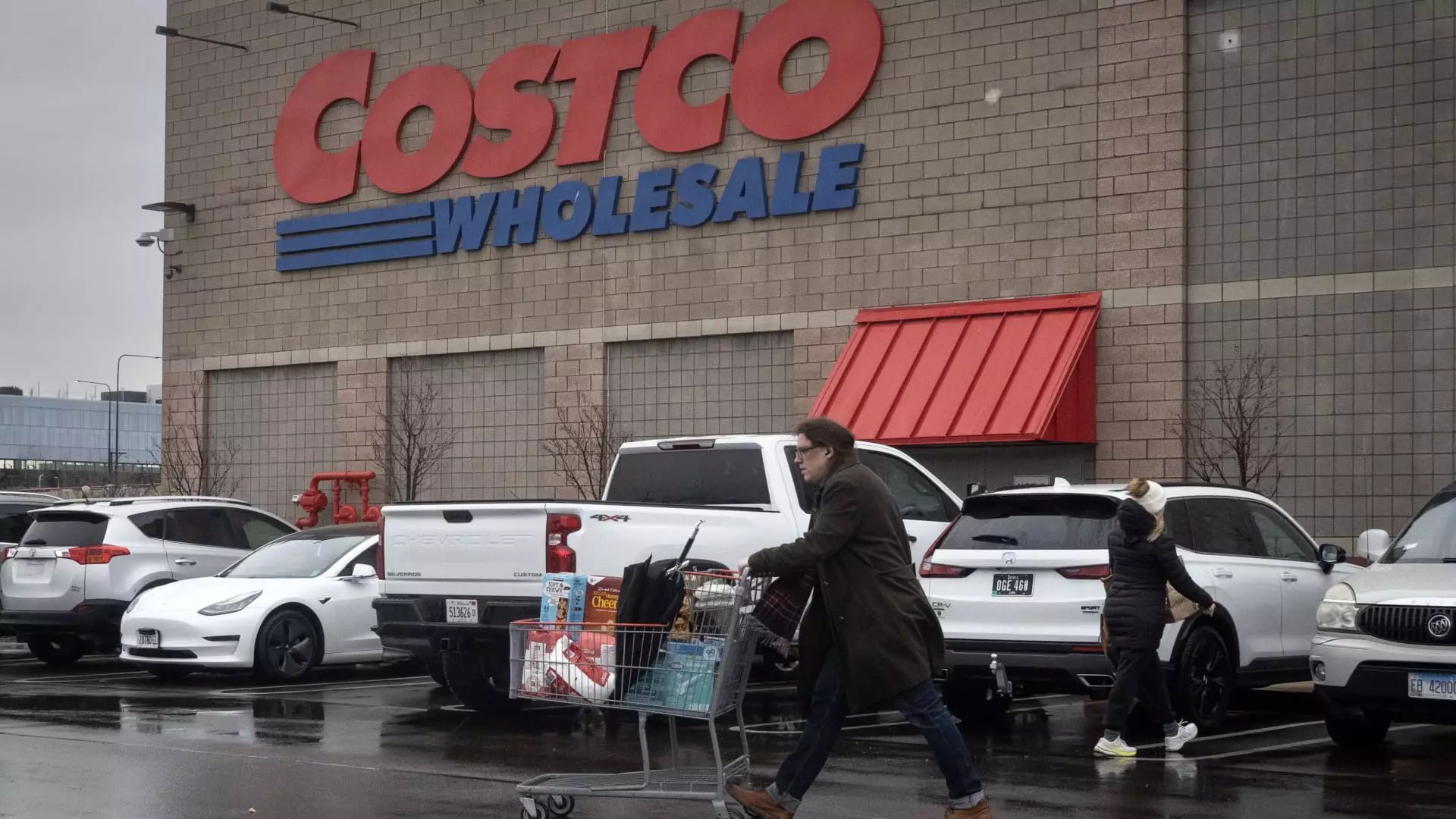Costco’s latest earnings report portrayed an organization navigating through turbulent waters. While the company’s revenue rose impressively to $63.72 billion, surpassing expectations, its earning per share fell short at $4.02, as analysts had anticipated $4.11. This discrepancy leaves a lingering question: was the earnings miss merely an anomaly or an indication of deeper issues affecting the retail giant? The drop in share prices by over 1% in after-hours trading hints at a growing investor unease, one that’s worth exploring.
Essentially, Costco’s revenue gain reflects the ongoing demand for bulk goods, particularly relevant during a time when many consumers are tightening their belts. Yet, the earnings shortfall raises eyebrows about profitability, especially when operational overheads, driven by tariffs and inflation, continue to loom large. For a company that prides itself on delivering value, the growing misalignment between revenue growth and profitability might indicate a brewing crisis.
The Tariff Tango
CEO Ron Vachris’s comments on tariffs paint a picture of a management team grappling with intricacies they cannot fully control. A third of Costco’s U.S. sales derive from imports, with close to half stemming from China, Mexico, and Canada, making the company vulnerable to policy changes. While the semblance of defense against tariff impacts is commendable, the reality remains that these levies are likely to inhibit the wholesalers’ ability to keep costs manageable for consumers.
The recent tariff surges—25% on Mexico and Canada, and a more stinging 20% on Chinese imports—are not just numbers on a page; they represent an escalating temperamental game of economic chess between the U.S. and its trading partners. Companies like Target and Best Buy are anticipating price hikes, and Costco is not immune. One must ask: how long can Costco’s business model sustain itself amid rising costs without passing some of that burden on to consumers?
Membership Growth Brings Hope, But at What Cost?
Despite the challenging landscape, Costco showed a notable increase in membership fees, generating $1.19 billion in the latest quarter—a small bump from $1.11 billion in the same period last year. With 78.4 million paid memberships and an exceptional renewal rate of 90.5%, one might argue that Costco remains a formidable force in customer loyalty. But this success is nuanced.
Raising membership fees can be seen as a double-edged sword; while an increase can buoy revenues in the short term, it risks alienating price-sensitive consumers who might already be feeling squeezed by inflation. In an era where every dollar counts, the masses are becoming increasingly selective, leading to potential churn unless Costco demonstrates relentless value.
Consumer Sentiment and Changing Buying Habits
On the surface, Costco’s sales categories present a tale of robust growth—jewelry, furniture, hardware, and toys all flourishing in double digits. Yet hidden beneath these numbers lies a critical context: consumer behavior is currently shifting. With inflation and the specter of tariffs looming, shoppers are exercising more caution, carefully weighing the perceived value against actual prices.
Ron Vachris’s insights on evolving purchasing patterns juxtaposed with Millerchip’s remarks reveal a cautious customer psyche. Members are not simply looking for bargains; they’re seeking high-quality goods that offer traditional value. The mere notion that consumers might adapt their buying habits further underscores the precarious position Costco finds itself in. Shoppers are clamoring for novelty and quality, but if their wallets begin to feel the pinch, will Costco maintain its momentum?
The Future of Fresh Foods
One of the prominent bright points in Costco’s report was the significant growth in the fresh foods sector, rising in the high single digits. The meat department experienced double-digit increases, particularly as consumers pivot towards more budget-friendly proteins—illustrating an interesting paradox. Although the overall inflation rate for fresh foods remains in low single digits, the demand for lower-cost items is a clear reflection of cash-strapped consumers seeking affordability.
What remains crucial for Costco is maintaining this growth against the backdrop of an increasingly squeezed consumer demographic. While the interest in home dining has bolstered sales, the company must continue to adapt its offerings to remain relevant, particularly as consumer reluctance towards increased pricing continues to grow. A focus on quality coupled with reasonable pricing could indeed determine whether Costco thrives as inflation tightens, or struggles, caught between rising costs and customer expectations.
As Costco surveys the economic horizon, one thing is certain: it lacks the immunity that once earmarked it as a ubiquitous retailer. The melding of consumer psychology, impending economic challenges, and the external pressures of tariffs paints a complex picture of uncertainty. It’s a time for introspection, innovation, and strategic recalibration if Costco intends to retain that coveted position in the hearts—and wallets—of its consumers.


Leave a Reply